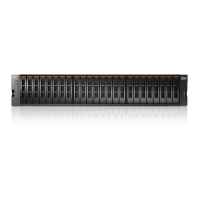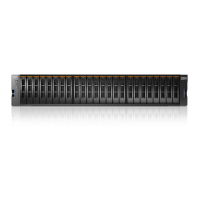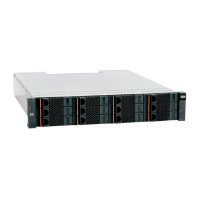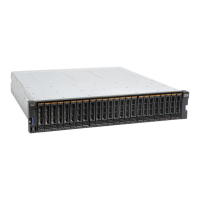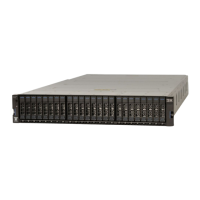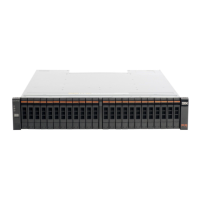Chapter 10. Copy services 487
After the FlashCopy is performed, the resulting image of the data can be backed up to tape,
as though it were the source system. After the copy to tape is complete, the image data is
redundant and the target volumes can be discarded. For time-limited applications, such as
these examples, “no copy” or incremental FlashCopy is used most often. The use of these
methods puts less load on your infrastructure.
When FlashCopy is used for backup purposes, the target data usually is managed as
read-only at the operating system level. This approach provides extra security by ensuring
that your target data was not modified and remains true to the source.
10.1.3 Restore with FlashCopy
FlashCopy can perform a restore from any existing FlashCopy mapping. Therefore, you can
restore (or copy) from the target to the source of your regular FlashCopy relationships. When
restoring data from FlashCopy, this method can be qualified as reversing the direction of the
FlashCopy mappings.
This capability has the following benefits:
There is no need to worry about pairing mistakes; you trigger a restore.
The process appears instantaneous.
You can maintain a pristine image of your data while you are restoring what was the
primary data.
This approach can be used for various applications, such as recovering your production
database application after an errant batch process that caused extensive damage.
In addition to the restore option, which copies the original blocks from the target volume to
modified blocks on the source volume, the target can be used to perform a restore of
individual files. To do that you need to make the target available on a host. We suggest that
you do not make the target available to the source host, because seeing duplicates of disks
causes problems for most host operating systems. Copy the files to the source using normal
host data copy methods for your environment.
10.1.4 Moving and migrating data with FlashCopy
FlashCopy can be used to facilitate the movement or migration of data between hosts while
minimizing downtime for applications. By using FlashCopy, application data can be copied
from source volumes to new target volumes while applications remain online. After the
volumes are fully copied and synchronized, the application can be brought down and then
immediately brought back up on the new server that is accessing the new FlashCopy target
volumes.
This method differs from the other migration methods, which are described later in this
chapter. Common uses for this capability are host and back-end storage hardware refreshes.
Preferred practices: Although restoring from a FlashCopy is quicker than a traditional
tape media restore, you must not use restoring from a FlashCopy as a substitute for good
archiving practices. Instead, keep one to several iterations of your FlashCopies so that you
can near-instantly recover your data from the most recent history, and keep your long-term
archive as appropriate for your business.
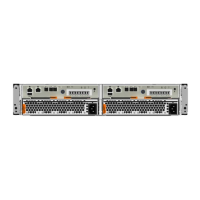
